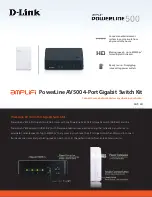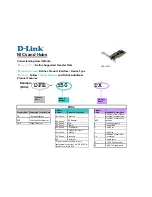
S&C ELECTRIC COMPANY
s
716-501
INSTRUCTION SHEET
Page 20 of 26
August 12, 2002
S&C Series 2000 Circuit-Switchers
Model 2010 — With Horizontal Interrupters and
Outdoor Transmission (69 kV through 230 kV)
Vertical-Break Power-Operated Disconnect
Step 22
Use the manual charging handle furnished with the opera-
tor to check functioning of the low-speed power train, as
follows. Refer to Figure 16.
(a) Open the access shutter and place the manual charg-
ing handle on the manual charging shaft.
(b) Rotate the shaft,
clockwise only, just to the point at
which the disconnect-blade tongue contacts clear
their respective jaw-contact fingers.
See Figure 13.
With the disconnect blades maintained in the posi-
tion shown in Figure 13, check each blade to verify that
its centerline has not shifted left or right by more than
¹⁄₄
inch—as measured to the centerline of its respective
jaw contact. If any blade centerline has shifted by more
than
¹⁄₄
inch, loosen the leveling-screw locknuts
located under the associated jaw-contact support insu-
lator. See Figure 14. Adjust the locknuts as necessary
to shift the jaw-contact centerline to correspond to
that of the blade centerline, ±
¹⁄₄
inch. Then tighten the
locknuts.
To avoid changing the effective height of the
support insulator, do not adjust more than three of
the four sets of locknuts.
(c) Continue to rotate the shaft,
clockwise only
, until a
firm resistance is felt. At this point, the disconnect
blades should be open past 90 degrees. If the discon-
nect blades are not open past 90 degrees, loosen the
locknuts at the top and bottom of the vertical operat-
ing pipe and rotate the pipe
clockwise
(as viewed from
the top) to increase blade travel; then tighten the lock-
nuts. Now verify, at each pole-unit insulating support
column, that the rotating-spindle open-stop bolt
does
not
touch the bumper. See Figure 12 (right). If any
open-stop bolt does touch the bumper, loosen the
locknuts at the top and bottom of the vertical operat-
ing pipe and rotate the pipe
counterclockwise
(as
viewed from the top) to decrease blade travel; then
tighten the locknuts.
Do not adjust the open-stop
bolts
.
(d) Remove the manual charging handle from the manual
charging shaft.
Step 23
Attach the high-voltage conductors to their respective Cir-
cuit-Switcher terminal pads using flexible-conductor con-
nections. Observe the terminal-pad loading limits
specified on the catalog drawing.
Use the following procedure for attachment:
(a) Thoroughly wire-brush the current-transfer surfaces
of each connector and immediately apply a liberal
coating of Penetrox
®
A (available from Burndy Corpo-
ration) or other suitable aluminum connector com-
pound to the brushed surfaces.
(b) Wire-brush each Circuit-Switcher terminal pad and
apply a coating of Penetrox A. Then bolt the connec-
tors to the terminal pads.
(c) Prepare the conductors using established procedures
and clamp them in their respective connectors.
Step 24
Remove the container from each interrupter as follows:
(a) Remove and discard the
³⁄₈
—16 zinc-plated serrated
hex nuts which run the length of the container.
(b) Remove and discard the
³⁄₈
—16
⁷⁄₈
and two
³⁄₈
—16
1
zinc-plated hex-head cap screws and flat
washers which attach the
upper
container-half to the
coupling end casting of the interrupter. Also remove
and discard the
³⁄₈
—16
⁷⁄₈
and two
³⁄₈
—16
1
zinc-
plated hex-head cap screws and flat washers which
attach the upper container-half to the indicator end
casting of the interrupter.
Figure 13. Checking alignment of disconnect blade and jaw
contact.
Ç
DANGER
Conductors must be de-energized and grounded in
accordance with standard system operating practice.
Failure to do so can result in serious injury or
death.
C
L
C
L
INSTALLATION — Continued
of disconect blade
of jaw-contact assembly
Disconnect-
blade tongue
contact
Jaw-contact
finger







































